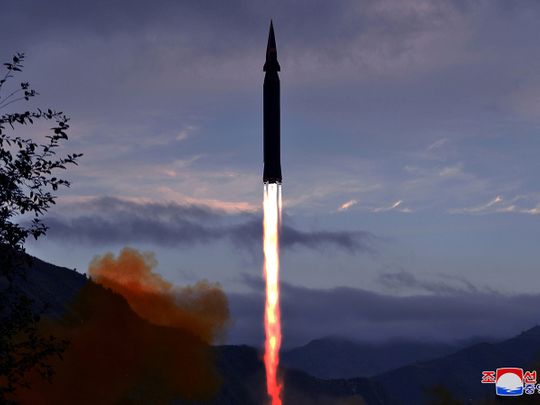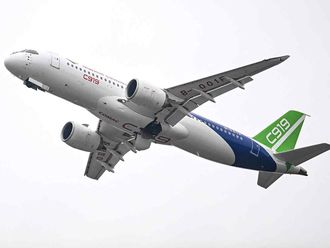
Seoul: North Korea has successfully tested a new hypersonic gliding missile, state media reported Wednesday, in what would be the nuclear-armed nation's latest advance in weapons technology.
Tuesday's launch was of "great strategic significance", the official Korean Central News Agency said, as the North seeks to increase its defence capabilities a "thousand-fold".
Hypersonic missiles move far faster and are more agile than ordinary ones, making them much harder for missile defence systems - on which the US is spending billions - to intercept.
The launch from Jagang province "confirmed the navigational control and stability of the missile", along with its "guiding manoeuvrability and the gliding flight characteristics of the detached hypersonic gliding warhead" and the engine, according to KCNA.
"The test results proved that all the technical specifications met the design requirements", it added.
The launch of the missile, which it identified as the Hwasong-8, was watched by top official Pak Jong Chon, it said, making no mention of leader Kim Jong Un.
The official Rodong Sinmun newspaper carried a picture of the weapon - with a set of guidance fins at the base of its nose cone - ascending into the morning sky.
The South's military had announced the launch shortly after it happened on Tuesday, but it did not officially reveal the missile's maximum altitude and flight distance afterwards, information that it normally makes available within around an hour.
South Korean media reports cited unidentified sources saying the projectile had "different flight features" from previous launches and President Moon Jae-in called for "comprehensive analysis" of the event.
Both Koreas are building up their weapons capabilities in what could become an arms race on the divided peninsula, with ramifications for neighbouring Japan and China and the wider region.
The nuclear-armed North, which invaded the South in 1950, is under multiple international sanctions over its banned nuclear weapon and ballistic missile programmes, and earlier this month said it had tested a long-range cruise missile.
Developing the hypersonic missile was one of five "top priority" tasks in the five-year plan for strategic weapons, KCNA said.
Submarine launch
Seoul is also spending billions on military development and this month successfully test-fired a submarine-launched ballistic missile (SLBM) for the first time, making it one of a handful of nations with the advanced technology.
On Tuesday, it held a ceremony to launch its third SLBM submarine.
Washington and Seoul are security allies and the United States stations around 28,500 troops in the South to protect it from its neighbour.
Talks between Pyongyang and Washington have been largely at a standstill since a 2019 summit in Hanoi between leader Kim and then-president Donald Trump collapsed over sanctions relief and what North Korea would be willing to give up in return.
Pyongyang has since then repeatedly excoriated the South and its president Moon, and blown up a liaison office on its side of the border that Seoul had built.
The administration of President Joe Biden - which condemned Tuesday's launch as a sanctions violation and a threat to the international community - has repeatedly said that it is willing to meet North Korean officials anywhere, at any time, without preconditions, in its efforts to seek denuclearisation.
But the North has not shown any willingness to give up its arsenal, which it says it needs to defend itself against a US invasion.











